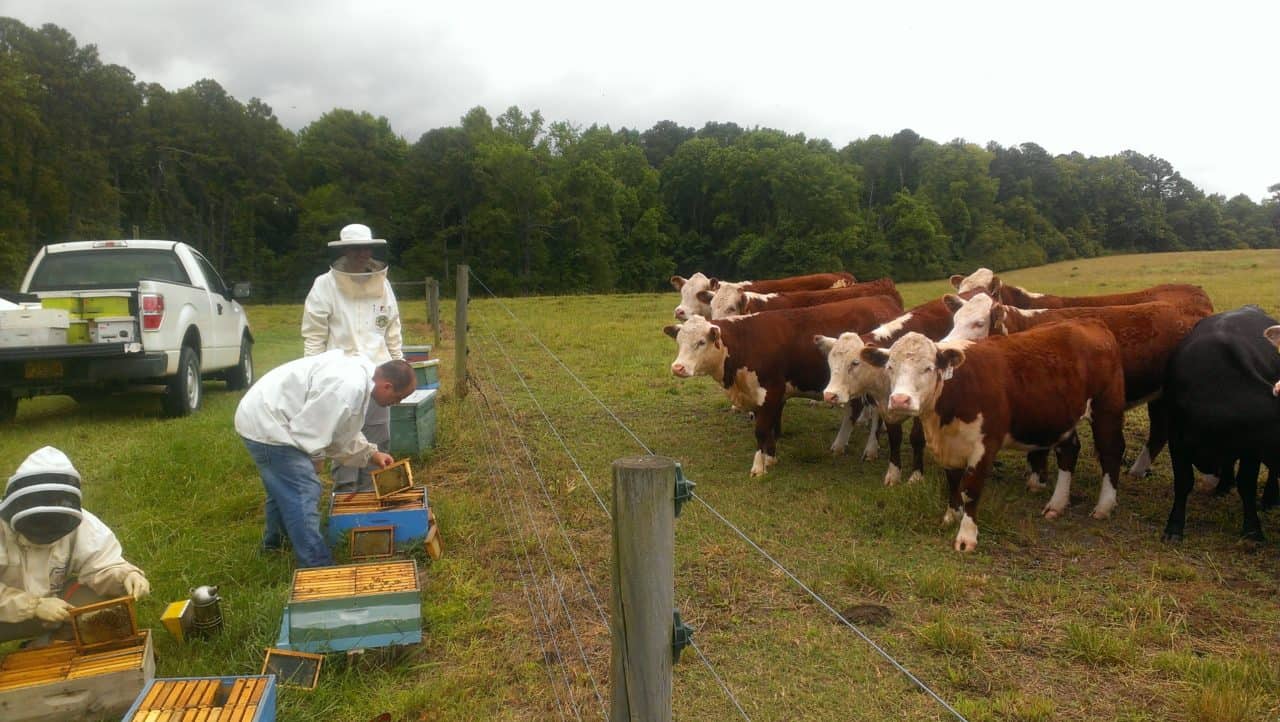The Bee Informed Partnership laboratory at University of Maryland, College Park participated in research to test for the presence of a wide range of pesticides in pollen samples of commercial honeybees. We wanted to know what bees were eating, how many pesticides were present in bee food and at what concentrations, and how pesticide use might correlate to Nosema infection. Nosema is a microsporidian gut-pathogen of honeybees that causes Nosemosis, a bee disease that weakens immune systems and harms colony health. Beekeepers and many in the agricultural community are paying close attention to Nosema due to the recent discovery of a new fungal pathogen, Nosema…
Author: The Bee Informed Team
Healthy Advantages of Working in the “Bee Lab”
I was fortunate enough to spend my semester interning for the VanEngledorp lab. Throughout my internship I got a firsthand look at how a lab functions and was able to participate. Mainly I would clean and prep samples for the various services this lab provides for apiaries. However, occasionally I would help with checking apiary samples for varroa. What I found to be most interesting to learn from this lab, was the benefits of honey for your body. This Is because I love to learn about how to achieve and maintain a healthy well-being, which is why im majoring in kinesiology. For example in a recent medical case…
An Intern’s Intro to Honey Bees
This past semester, I have been working as an undergraduate intern in Dr. vanEngelsdorp’s honey bee lab at the University of Maryland. My previous bee knowledge consisted of only a few fun facts learned in intro biology courses and some honey extracting methods learned while working with another professor in the entomology department here at UMD. Needless to say, my expertise in honey bees has vastly grown. I could tell you the differences between a queen, drone, and worker bee and why they do a few of the many amazing things they do. More specifically, I have been working on a Nosema spore project. Along…
BIP Ad. November 2013
Survey Winner Announced! Scott Jaynes is our survey winner for this year. Our BIP Tech Team visited Scott in August. You can read more about the visit on our blog.
Working at the NCSU Bee Lab
Jordan Arata, one of our undergraduates who worked for our lab this summer was 'stationed' at the North Carolina State University lab working with Dr. David Tarpy. He details his experiences below. Jordan is also President of the UMD Apiary club. This summer I had the pleasure of working and learning at David Tarpy’s honey bee research facility at North Carolina State University. There, I worked alongside my friend Sam Freeze to help David Tarpy, Mike Simone-Finstrom, Jennifer Keller, and Ming Huang with various projects and experiments. One of these experiments investigated virus transmission in raising new queens. This was done by comparing the prevalence…
Tropilaelaps Mites, Part 2
Author: Elinor M. Lichtenberg Varroa mites cause significant harm to honey bee colonies word-wide. A similar pest, Tropilaelaps mites, could cause widespread damage if introduced to Europe or the Americas. We described the natural history of these mites last year. In parts of Asia where both mites are found, the Tropilaelaps mite is often considered a worse pest than the Varroa mite. Its life cycle is much shorter, facilitating rapid population growth. In Tropilaelaps mites’ native range, beekeepers must treat colonies with acaricides every two weeks to control these mites. US beekeepers currently treat for Varroa mites two or three times per year, too infrequently…
National Management Survey Results
Our initial National Management Survey Results for 2011-2012 are posted here. In the coming weeks we will post accompanying vlogs and explinations for each section that explain the results in a broader context. Keep your eye out for these results, and in the coming months 2012-2013 results will be released as well.
BIP Ad. June 2013
How did you start a new colony? Those who did not install packages lost 33.5% less colonies than those who did install packages. Those who bought existing hives lost 13.5% less colonies than those who did not buy hives and beekeepers who split hives to increase their colonies lost 23.% less colonies than those that did not split colonies.
Speaker Request Form
Dear Beekeeper, We greatly appreciate your request for a member of the Bee Informed Partnership team to present to your organization. As our partnership raises awareness, we have been inundated with requests to speak to organizations and groups across the country. Due to the overwhelming number of requests we receive it is important that we are selective in the amount of time we take away from our daily research tasks to prepare and present at events. In an ideal setting we would be able to take the time to honor every speaking request we receive, and as enjoyable as that would be, unfortunately, we are…
APHIS US Honey Bee Pest and Disease Survey 2011/2012 Survey Report
The APHIS 2011/2012 Honey Bee Pest and Disease Survey report This report details the result of a year long, 35 state honey bee survey that, as a primary goal, looked for invasive species such as the parasitic mite, Tropilaelaps spp., the Asian honey bee, A. cerana and Slow Paralysis virus (SPV), not known to be in the US at this time. Further honey bee health data were collected and will be added to the Bee Informed Partnership database to help interpret ongoing and future epidemiological studies. This report and previous year reports are available at http://www.aphis.usda.gov/plant_health/plant_pest_info/honey_bees/index.shtml
